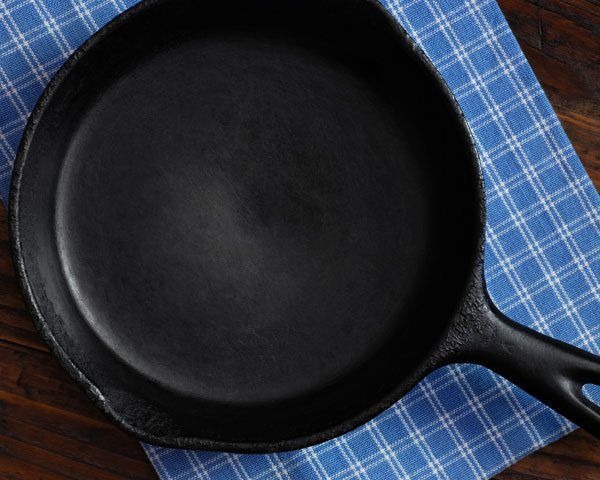Cast Iron, Non-Stick, And Stainless Steel: When To Use What
Novice home-cooks tend to use the same pan for cooking everything, but different types of pans serve distinct purposes. Some metals can endure high temperatures while others can interact with acidic foods, so, depending on the meal, it's important to choose the appropriate pan. For example, cast iron pans are best for ingredients that need high heat, while non-stick pans are ideal for cooking delicate ingredients, and stainless steel pans are great for searing caramelized crusts on meats.
Click here to see the Cast Iron, Non-Stick, and Stainless Steel: When to Use What (Slideshow)
Cast iron pans and skillets are the most durable cookware on the market. Thick and heavy, they do well in high heat, which makes them perfect for cooking meats and caramelizing vegetables. As the most versatile of the three pan types, they can cook everything from fried chicken on the stovetop to baked rustic cornbread in the oven. Cast iron does take some work to maintain, though, and requires regular seasoning before it is stick-free.
Non-stick pans are a popular kitchen item because they are easy to clean, but their best use is for cooking delicate foods like eggs or fish because ingredients won't come apart by sticking to the bottom of the pan. When preparing a dish with cheese, or any other messy ingredient, non-stick is a great option because it is the easiest to clean. They are also non-reactive, so it's safe to prepare most ingredients in them. Using heatproof spatulas or wooden utensils is key to avoid damaging the nonstick base, which can flake off and leach dangerous chemicals.
The often-forgotten stainless steel pan also has its usefulness. For optimum use, preheat the pan before cooking to ensure that the surface becomes slick. The best use of stainless steel is for searing, or for making a crispy poultry skin because it can stick to the pan long enough to become crisp. Use stainless steel pans when cooking with acidic ingredients like tomatoes or vinegars because the metal won't react with the acidity. A bottom heavy pan is ideal, which helps to evenly distribute and retain the heat — even more efficient are the ones with copper or aluminum cores.
Read through the slideshow for tips on choosing the right pan for your next meal.
